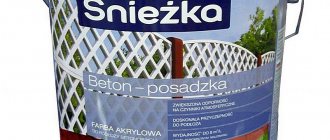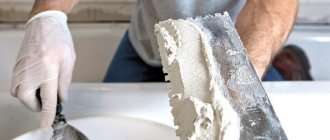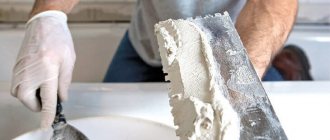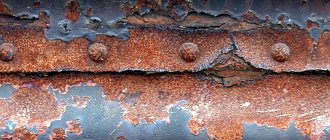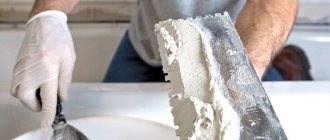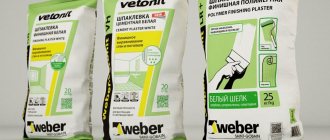In this material we will tell you how to choose tiles for a bathtub, what to pay attention to first, and also show ready-made ideas for stylish and practical interiors for every taste and budget. After all, tiling a bathroom is a responsible and important task. Despite the fact that the average person spends no more than 1 hour a day in the bathroom, its decoration must be approached thoroughly, since high-quality and stylish renovations directly affect the mood of the household and their comfort. A bathroom is a place where a person can not only get themselves in order, but also relax after a hard day, so tiles for the bathroom must be chosen carefully so that they meet the technical characteristics of the room, fit organically into the overall design of the room and are “pleasing to the eye.” all family members.
How to choose tiles for a bath?
How to choose tiles for the bathroom?
The choice of finishing tiles in construction stores is very wide, and it is sometimes not always possible to choose a truly high-quality product if you do not understand the intricacies and nuances of the repair business. In this section, we will tell you what features you should pay attention to when going to the store, and how to choose tiles for the bathroom, taking into account its size and other important characteristics.
Material
This is one of the key characteristics that determines most of the consumer and performance properties of the finishing material. More than 80% of the tiles on the market are ceramic tiles (tiles). It is made by casting, pressing or extruding from baked clay with the addition of a small amount of sand mixtures and quartz. Tiles made according to technological regulations are durable, heat- and wear-resistant and have high aesthetic properties (the exception is cast tiles, which often contain defects in the form of uneven edges or different sizes).
Types of finishing tiles by material of manufacture
| What material is it made from? | Image | Peculiarities |
| Ceramics | The most popular and inexpensive type of tile, it occupies about 80% of the market. Durable, resistant to moisture, has good aesthetic qualities. A big plus of tiles is a huge selection of shades, colors, palettes and textures | |
| Clinker (ceramic brick) | This is a special type of tile that is made from special clay. The material is first fired using traditional technology, and then baked, as a result of which the tiles take the form of bricks. The shade of the clinker tile depends on the degree of baking, but the general motif remains the same (brick-like tiles) | |
| Porcelain tiles | Expensive finishing material imitating natural stone. It has increased strength, almost 100% waterproofness and wear resistance. On sale you can find porcelain tiles that imitate wood and various rocks |
Porcelain stoneware tiles are considered the highest quality and most durable, but ceramic products are also quite durable, so they are quite suitable for renovating a bathroom in an apartment, country house or country house.
Porcelain tiles are considered the most durable
Room area
For a small bathroom, experts recommend choosing small tiles. Ceramic tiles of medium-sized square or rectangular shape look very harmonious in small rooms and help to avoid the effect of “spoiled perception”, which can make the image of a bathroom or toilet unfinished and inorganic. For small rooms, designers advise choosing rectangular tiles: if you use them vertically, you can visually increase the height of the ceilings, and horizontal masonry visually “expands” the space, making it more spacious and impressive.
Expert opinion: Masalsky A.V.
Editor of the “construction” category on the Stroyday.ru portal. Specialist in engineering systems and drainage.
Large tiles with a thickness of 10 to 15 mm look good in large bathrooms and are suitable for effective floor finishing, but when buying such material, you must remember that large tiles have a lot of weight, and for its installation you need to purchase a special glue with increased adhesive properties.
For a small bathroom it is better to use small tiles and light colors
Purpose of use
Finishing tiles for the bathroom come in two types: for the floor and for the walls. Floor tiles are usually larger in size, thicker and stronger, and more resistant to impact loads. For wall tiles, which differ in characteristics from standard floor coverings, the degree of water absorption (the optimal figure is 20%) and the presence of an enamel coating, which creates additional protection from destructive factors, are important. For the upper part of the walls that most often come into contact with water (this is the area in which the bathtub is installed), experts advise buying glazed tiles. This is an ordinary tile coated with a thick layer of special glaze. Technical glaze makes it easier to care for the product and protects tile seams that can become deformed under the influence of water.
Wall tiles are indicated on the packaging with a “palm” sign. The covering intended for finishing the floor is marked “foot”. Large companies, which have their own designers on staff, produce sets of wall and floor tiles, selected according to the geometry of the pattern, color and representing a single artistic motif.
Icon designations on the tile box
Color
Contrary to the opinion of many people, tiles of light shades (white, milk, baked milk, sea sand, cream, etc.) are considered the most practical. These are neutral, classic options that go well with any color scheme and visually increase the space by 1.5 times. Dark colors (especially black and chocolate brown) have the exact opposite effect: they reduce the area of the room, do not suit all color combinations and motifs, and have a depressing effect on a person’s psycho-emotional state.
The light shade of tiles is considered the most practical for the bathroom
Experts allow the use of black tiles only in the lower or side parts of the walls, provided that more than 50% of the room is lined with material of calm, light shades. In addition, traces of cleaning products, fingers, and water stains are more visible on dark tiles, so such a solution may not only be unsuccessful from the point of view of a holistic perception of the interior, but also impractical, since it will require more effort to maintain order in the bathroom.
An example of using dark tiles in a bathroom
Experts consider turquoise, coffee, beige, and pink shades to be the most expressive and suitable for various design solutions. With the help of such tiles you can create both monolithic coverings and complex geometric combinations and even mosaics.
Tiles in bright colors (red, gold, green, blue, etc.) are mainly suitable for creating spectacular styles, zoning rooms and highlighting bright accents in a holistic design.
Separate bathroom areas using tiles of different sizes and colors
Dark or light bathroom
Light walls give the impression of space and reflect light, so they work well in small rooms. Bright bathroom tiles pair interestingly with white fixtures and fittings, such as vanities or bathtubs.
This is one of the options for the most fashionable bathroom tiles 2022.
- Dark bathroom tiles are most often used to decorate large rooms in the Art Nouveau style.
- One or more dark walls are one way to create visual contrast for bright, large spaces, as well as a good backdrop for patterns.
- Dark walls allow you to display original accessories and unique design of plumbing fixtures.
However, when choosing a dark arrangement, you should especially take care of good lighting in the bathroom.
Which tiles to buy: review of ready-made solutions
When purchasing facing tiles, many factors are of great importance: from the size of the room itself to the budget that you are willing to spend on renovations. In this review, we have collected the best types of bathroom wall and floor tiles from various price categories so that you can choose the best option. To choose tiles for walls, it is recommended to first draw up a design project (on your own or contact a specialist), and then decide on the main characteristics that are suitable specifically for your room. All tiles of this type are divided into several categories: the actual tiles for wall cladding, borders for zoning or finishing, panels and mosaics.
10 best ceramic tile manufacturers
Ceramic tile rating
| Photo | Name | Rating | Price | |
| #1 | La Fabbrica | ⭐ 4.25 / 5 13 — votes | Link to the product | |
| #2 | Kerama Marazzi | ⭐ 4.5 / 5 13 — votes | Link to the product | |
| #3 | Jasba | ⭐ 4.5 / 5 1 - voice | Link to the product | |
| #4 | Aparici | ⭐ 5 / 5 5 — votes | Link to the product | |
| #5 | Grazia | ⭐ 5 / 5 2 - votes | Link to the product |
Which bath tile do you think is the best?
Take the survey
Bathroom in Provence style
Provence is one of the most popular styles for decorating bathroom interiors, chosen by people of different ages and status. It is characterized by an abundance of light, so the entire composition is done in neutral classical tones. It is acceptable to use white, milky, cream, beige tiles, as well as aqua-colored decorative elements. The interior is calm, with floral motifs often used. The color of the flooring should not differ greatly from the main color scheme of the room, so it is made only 1-2 tones darker than the walls (unlike other styles, where the floors have some of the brightest accents).
An effective combination for such a design solution is a combination of porcelain tile flooring with wood finish and textured wall cladding with 1:1 zoning.
Bathroom in Provence style in neutral classic colors
Bathroom in loft style
These are very modern and stylish interiors, in which the predominant tones are brown, coffee and chocolate shades, as well as wood motifs, with the main emphasis being placed on the upper part of the room (that is, the floor is tiled several tones lighter than the walls). The interior in the loft style is characterized by pronounced minimalism and asceticism, but it is these variations that are considered the most practical for people with a medium and high rhythm of life. A special feature of loft-style bathrooms is that glazed tiles are practically not used for decoration: both the walls and the floor are lined with matte or semi-matte tiles. It is also possible to use porcelain stoneware or clinker (the latter option looks especially harmonious in the overall design picture).
A loft-style bathroom is characterized by pronounced minimalism
Bathroom in the style of "natural motifs"
Contrary to the opinion of the majority that a bathroom in the style of natural motifs is almost always done in green colors, the most harmonious and suitable color solutions for such a design project are combinations of wood, beige, and sand shades. Green tiles (most often in the form of either a mosaic or a panel) are used primarily to create one or two volumetric accents. This could be an image of a plant, a floral mosaic, an effective zoning of the floor or one of the walls (usually the side on which the bathtub is installed).
The total proportion of green in such bathrooms does not exceed 20%. You can choose different variations for the floor, but more often it is the bright floor covering that is one of the main accents of such interiors.
For a bathroom in the style of “natural motifs,” wood, beige, and sand shades are perfect
Romantic style bathroom
The “romantic” style, unlike other styles, is not universal, so such a solution does not look very appropriate, and to some extent even ridiculous, if it is used to decorate a combined bathroom. Romantic style design is suitable for medium to small sized bathrooms. If you need to renovate a large bathroom, the design must be supplemented with some bright motif, for example, a spectacular panel or complex geometric abstraction, otherwise the interior will look unfinished, since the “romantic” style itself is quite simple.
As for the floor, you can experiment here, but in compliance with the main rule: the color of the floor covering should match the main color scheme of the interior or differ from it by no more than one tone (you can choose tiles either lighter or darker than the main color of the walls) . The most popular romantic motif is floral. Suitable colors: pink, raspberry, lilac, purple. Red shades in such interiors look quite aggressive, so choosing them is not recommended.
A romantic style bathroom is an excellent solution for small bathrooms
Marine style bathroom
The marine theme is one of the most popular and sought-after solutions for bathroom renovations, giving enormous scope for imagination. The main colors are, of course, blue, cyan, turquoise, aquamarine and sea green. The interior can be made entirely in this color palette, but it is better to dilute it with sand, white and green shades.
Three-dimensional tiles with a 3D pattern (these can be fish, dolphins, shells, starfish, aquatic plants, etc.) are very popular for decorating bathrooms in a marine style. Such decorative elements are expensive, but they look very beautiful and impressive, creating a unique, stylish and rich interior in bathrooms. Such tiles look especially fascinating on the floor, so finishing with volumetric floor coverings with an immersive effect is becoming increasingly popular and in demand.
Bathroom with 3D effect
3D tiles are sold as a set and are most often made to order. The disadvantage of products of this type is that if during the work at least one of the elements is damaged, you will have to buy a new set again at full cost.
Roman style bathroom
A Roman-style bathroom is one of the classic finishing options, refined and elegant, perfect for people with a calm character and connoisseurs of the classics. An important detail in all interiors of this type is the decoration with gold-colored decorative elements. This could be a tile with gold embossing, a gold border, a small panel with gold trim, etc.
The predominant colors are beige, yellow, golden, and sand shades, but wood motifs can also be used. Clinker tiles for finishing a Roman-style bathroom are not suitable, as they have a different texture and do not fit well into the interior of such a plan.
Classic Roman style bathroom
Bathroom in oriental style
Oriental motifs involve the use of bright colors, as well as dark shades: black, brown, burgundy, coffee and chocolate. Popular tiles with oriental ornaments, hieroglyphs, classic interior design in oriental style - a panel with a view of cherry blossoms on the main wall of the room. It is noteworthy that this style does not have any clear directions in terms of color policy or design materials, and a variety of elements can be used for decoration, including clinker bricks and porcelain tiles with imitation stone or wood.
Japanese style bathroom
Rating of the best manufacturers
The best cladding manufacturers are the following companies:
- Cersanit (Germany, Poland, Russian Federation, Ukraine);
- Kerama Marazzi (RF);
- Golden Tile (Ukraine);
- Fap Ceramiche (Italy);
- Mainzu Ceramica (Spain);
- Adex (Spain);
- Opoczno (Poland);
- Rako (Czech Republic);
- Ceramica Paradyz (Poland).
Spanish and Italian materials stand out both in quality and price. Expensive collections accurately convey the textures of natural materials, and the combination of wall and floor tiles does not create the impression of a stand.
If the cost of Spanish and Italian tiles does not correspond to the renovation budget, you can choose high-quality Polish, Czech, Russian or Ukrainian tiles. A compromise option would be the Kerama Marazzi product. This company produces cladding in Russia, but using Italian technologies and modern European equipment.
Expert advice on choosing bathroom tiles
Expert advice in the field of renovation and design will help you choose tiles for finishing the walls or floors in the bathroom.
- The optimal solution for finishing a bathroom would be to use porcelain tiles with a stone or wood finish for the floor and tiles for the walls. Porcelain stoneware is a more durable material, has optimal moisture absorption and is resistant to any impact loads, so it is ideal for floor repairs.
- It is not recommended to select tiles for renovation online. Experts advise viewing each sample in person, since only in this way can you fully evaluate the geometry of the design, the type of edges, color rendition and other important characteristics that ultimately determine the completeness of the artistic image and the integrity of the interior.
- To determine the effectiveness of joining and seaming, as well as the evenness of the edges of the finishing material, you need to take two tiles and press them tightly against each other. They must match perfectly in size and not form air pockets.
- To create a spectacular “natural” interior, it is better to choose matte and semi-matte tiles. It looks better than glazed products, but has a significant drawback - it is more difficult to wash off stains. Glossy tiles are easier to clean, but they are very susceptible to any impact, so fingerprints and stains from water and detergents often remain on such tiles.
- The ideal solution for better visual perception is to purchase seamless tiles. Previously, such tiles were produced only by well-known companies whose products were in the above-average price category, but now similar products can be found in budget brands.
For the tiles, do not forget to purchase grout for joints and special glue with high adhesive properties.
Bathroom decorated with seamless tiles
Facing tiles are the most important finishing element and the main component of renovation in bathrooms and toilets. Choosing it is not so easy, since appearance and price are not the only factors that influence the possibility of purchasing a particular type of tile. In this material, we told you what to look for when purchasing in order to choose really high-quality material, and also provided ready-made design solutions in various styles to make it easier for you to navigate your preferences.
Quantity calculation
To calculate the amount of tiles, you need to measure the perimeter and height of the walls, calculate the total area and subtract the area of the doorway from it. Divide the remaining value by the area of 1 tile. To trim the material, a margin of 10-15% is taken. Taking into account possible defects and trimming, the reserve should be 15-20%.
The number and area of tiles is indicated on the box.
Borders and decor are purchased individually, in accordance with the length of the perimeter. When purchasing, a 10% reserve is included.
Formula for calculating the number of tiles in a bathroom.
